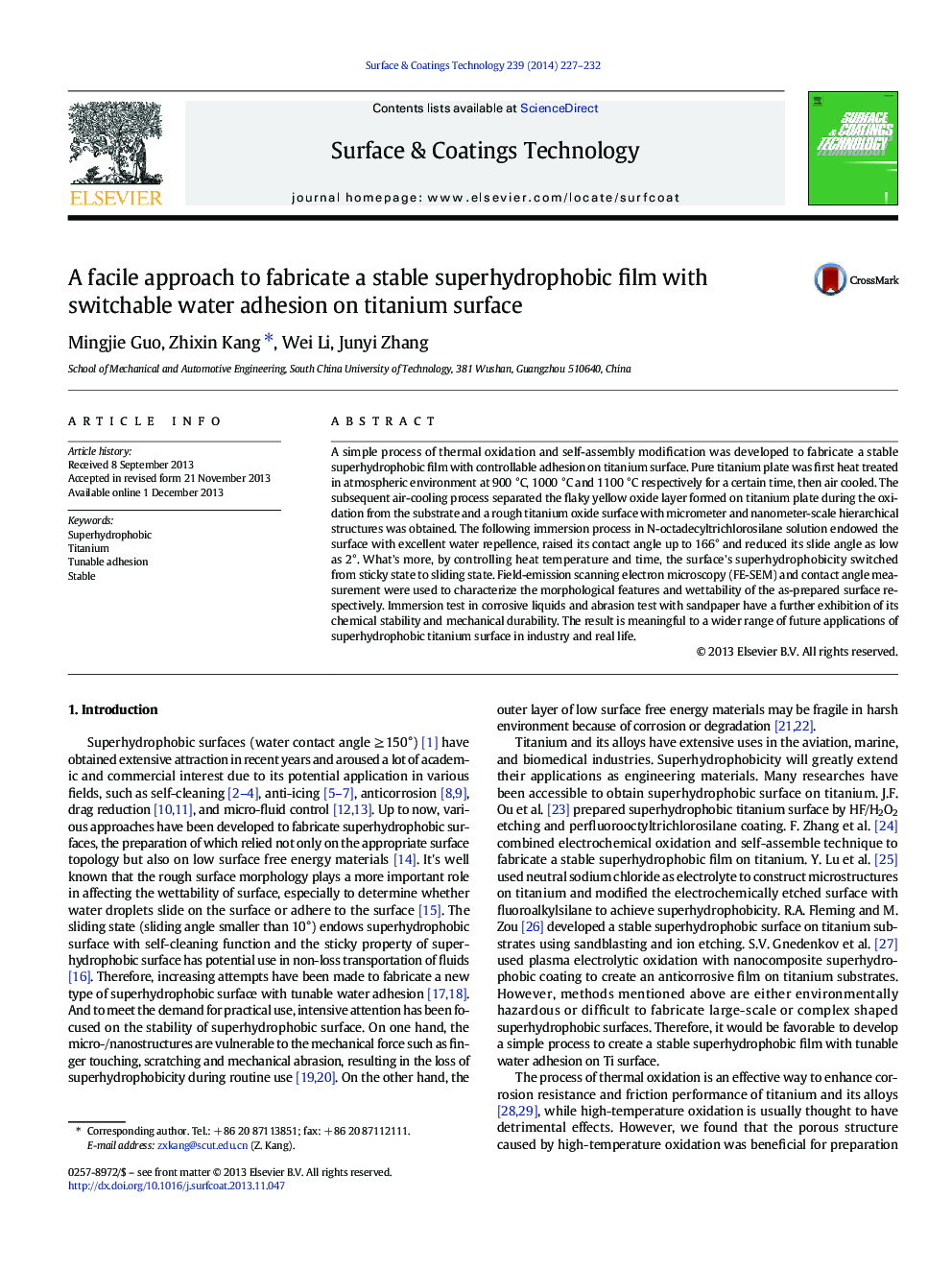| Article ID | Journal | Published Year | Pages | File Type |
|---|---|---|---|---|
| 8028523 | Surface and Coatings Technology | 2014 | 6 Pages |
Abstract
A simple process of thermal oxidation and self-assembly modification was developed to fabricate a stable superhydrophobic film with controllable adhesion on titanium surface. Pure titanium plate was first heat treated in atmospheric environment at 900 °C, 1000 °C and 1100 °C respectively for a certain time, then air cooled. The subsequent air-cooling process separated the flaky yellow oxide layer formed on titanium plate during the oxidation from the substrate and a rough titanium oxide surface with micrometer and nanometer-scale hierarchical structures was obtained. The following immersion process in N-octadecyltrichlorosilane solution endowed the surface with excellent water repellence, raised its contact angle up to 166° and reduced its slide angle as low as 2°. What's more, by controlling heat temperature and time, the surface's superhydrophobicity switched from sticky state to sliding state. Field-emission scanning electron microscopy (FE-SEM) and contact angle measurement were used to characterize the morphological features and wettability of the as-prepared surface respectively. Immersion test in corrosive liquids and abrasion test with sandpaper have a further exhibition of its chemical stability and mechanical durability. The result is meaningful to a wider range of future applications of superhydrophobic titanium surface in industry and real life.
Related Topics
Physical Sciences and Engineering
Materials Science
Nanotechnology
Authors
Mingjie Guo, Zhixin Kang, Wei Li, Junyi Zhang,
